
JAMES R. ARNOLD
TET OFFENSIVE 1968. TURNING POINT IN VIETNAM
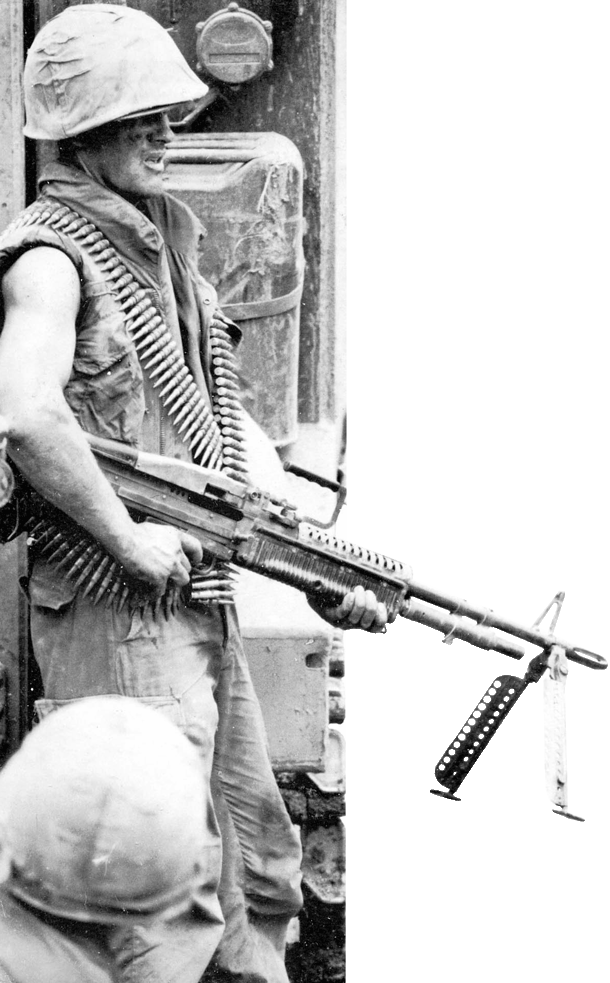
The M-60 machine-gun was a belt-fed, gas-operated, air-cooled weapon that fired a 7.62mm round to an effective range of 1,100 yards. It had a sustained rate of lire of some 100 rounds per minute. Without mount or ammunition, it weighed 23 pounds and was thus carried on jungle patrol.
Numerous people contributed to the completion of this book. My wife, Roberta Wiener, edited the manuscript and served as picture researcher, helping to locate and select the photographs. John Moore, of Military Archive and Research Services in Braceborough, England, taught Roberta and me how to conduct photo research. Steve Everett of the Center for Military History, Washington, DC, provided transcripts of interviews with Vietnam veterans from his Oral History Archives. Dorothy McConchie and Robert Waller of the US Department of Defense Still Media Records Center in Washington, DC, were most helpful in guiding us through their tremendous photograph collection. The reference librarians, most especially Ben Ritter, at Handley Library in Winchester, Virginia, cheerfully and quickly processed my long list of inter-library loan requests. 1 wish to thank you all.
Key to Map Symbols
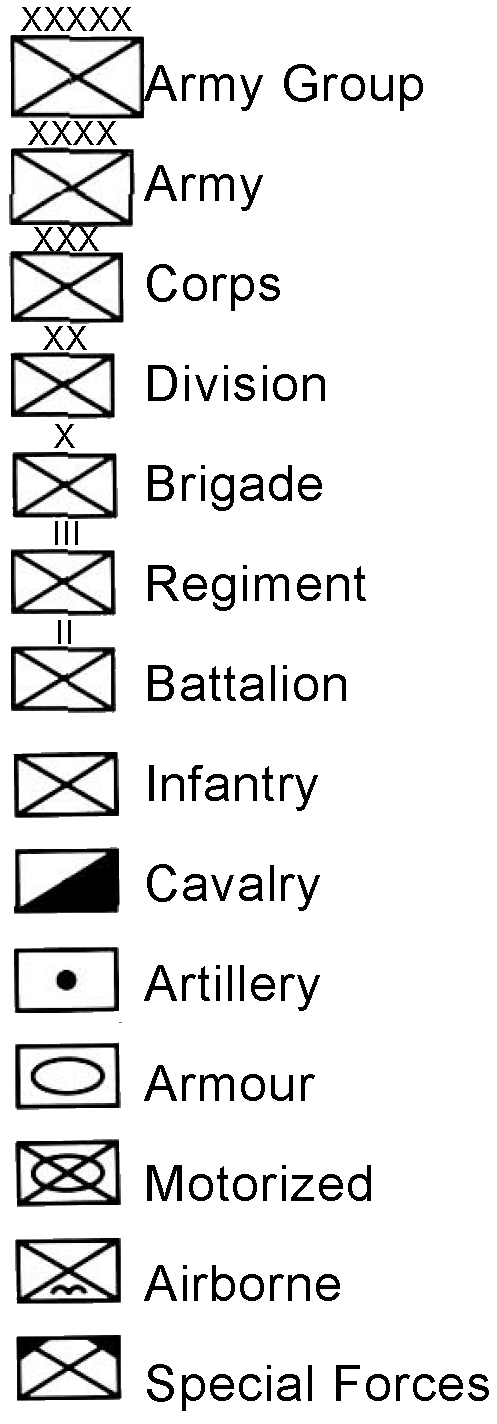
The supreme command for the Vict Cong/North Vietnamese Army (VC/NVA) forces had a coherent strategy for conquering South Vietnam that the Americans neither fully appreciated nor effectively countered. In general terms, Communist strategists followed Mao Tse-tung's principles of guerrilla war. But ever inventive, the Vietnamese Communists adapted strategies for their unique circumstances. It was a strategy devised in the early 1960s when America only had advisers in Vietnam, and tenaciously clung to during the difficult years of massive US military activity until final victory. In essence it proved a war-winning strategy.
The overriding goal was to effect a withdrawal of American forces from South Vietnam to bring about negotiations leading to a new, Communist-dominated government in the south. To achieve this political end, the National Liberation Front fought on three fronts: political, military and diplomatic. The political battle involved mobilizing support from the people of South Vietnam while undermining the South Vietnamese government. The military component required confronting the Americans and their allies on the battlefield to inflict losses whenever possible. On the battlefield there were no objectives that had to be held. The diplomatic element of the three-prong strategy focused on mobilizing international opposition to the American war effort and promoting anti-war sentiment in the United States. As explained by a high-ranking Viet Cong:
'Every military clash, every demonstration, every propaganda appeal was seen as part of an integrated whole; each had consequences far beyond its immediately apparent results. It was a framework that allowed us to view battles as psychological events.'
In mid-1967, the Communist high command decided that the time was ripe for the crowning psychological event, a surprise nation-wide offensive to coincide with the Tet holidays.

According to Westmoreland's strategy, US forces were to engage regular enemy formations while ARVN forces concentrated on pacification. The problem was finding the enemy. Men of the 1st Cavalry Division (Airmobile) - the elite 'First Team'-conduct combat assault into the An Lao Valley.
About the time when Communist planning for the Tet Offensive began, top-level American civilian and military planners met in Honolulu. The conference focused on how to interdict the flow of enemy troops and material into South Vietnam. Inevitably, this led to consideration of higher strategy. The conference's final report stated: 'A clear concise statement of US strategy in Vietnam could not be established... A war of attrition provides neither economy of force nor any foreseeable end to the war.' The conference could simply not identify anything worthy of being called a strategy.
In the broadest terms, the American high command had pursued a two-part scheme since 1966. General William C. Westmoreland described this approach in an interview as the Tet Offensive was winding down: '... the [South] Vietnamese forces would concentrate on providing security to the populated areas, while the US forces would provide a shield behind which pacification could be carried out'. The idea was that the American forces would operate away from populated areas where they could use their superior firepower and mobility to counter the North Vietnamese Army and Vict Cong mainforce units. Speaking after the war, Marine Corps historian and Vietnam veteran Brigadier General Edwin Simmons commented:
'It's true we violated many of the basic principles of war. We had no clear objective. We had no unity of command. We never had the initiative. The most common phrase was "reaction force" - we were reacting to them. Our forces were divided and diffused. Since we didn't have a clear objective, we had to measure our performance by statistics.'
Thus the sterile tabulation of 'Battalion Days in the Field', hamlets 'controlled', or most notably 'body count' replaced clear strategic direction.
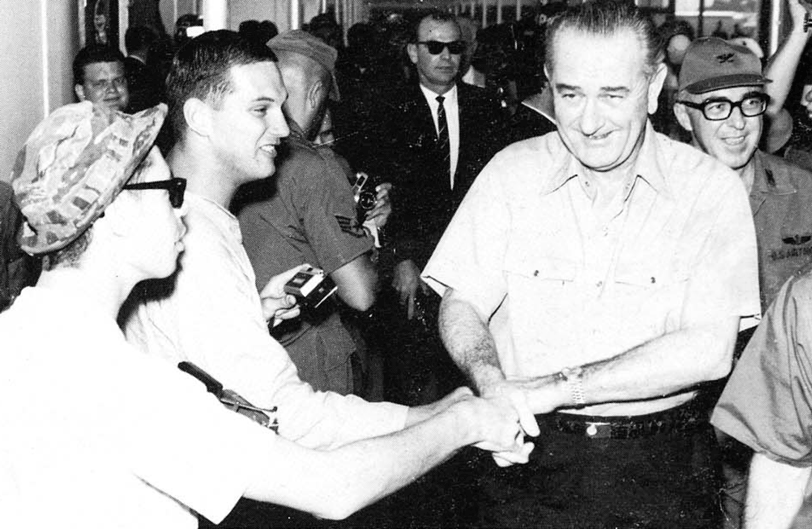
During the months leading up to the Tet Offensive, President Lyndon Johnson and his administration told the American public that the Allies were winning the war. This left the public unbraced for the coming shock. A well-intentioned man, Johnson lacked the vision to guide the country to a satisfactory resolution of the war. Here he shakes hands during a visit to a hospital at Cam Ranh Bay in 1967.
President Lyndon Johnson tried to counter the growing public doubts about the war by a carefully crafted propaganda campaign in late 1967. It claimed that the Communists were slowly losing the war. He sought to gain support for a long-term, limited-war policy. With hindsight it is clear that this approach contained neither a decisive war-winning strategy nor a plausible diplomatic outcome. Worse, from the administration's stand point, the implicit message was that there would be no unexpected battlefield surprises.
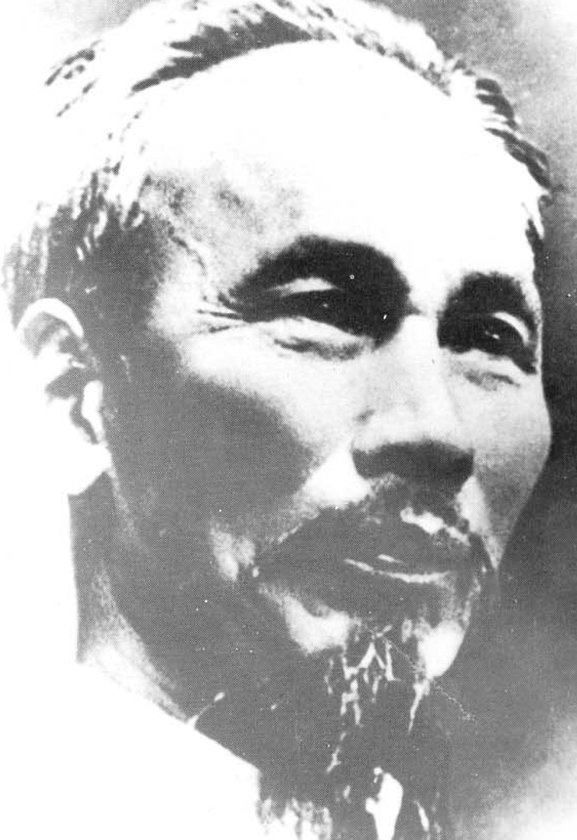
In the summer of 1967 North Vietnamese warriors and diplomats met in Hanoi and decided to take an immense strategic gamble. While the Tet Offensive was Defence Minister Giap's brainchild, Ho Chi Minh gave his blessings to the effort. His recorded tapes were meant to be played on captured South Vietnamese radio stations. Communist planners believed that everyone would rally to the popular 'Uncle Ho' and help drive out the hated foreigners.
In July 1967, the Communist high command, including political and military leaders from both North and South Vietnam, met in Hanoi. Because North Vietnam recalled its foreign ambassadors to attend the meeting, American intelligence learned of the unusual gathering. It could have been the first piece in the intelligence puzzle leading to anticipation of the coming offensive. Instead, analysts believed the meeting's purpose was to consider a peace bid.
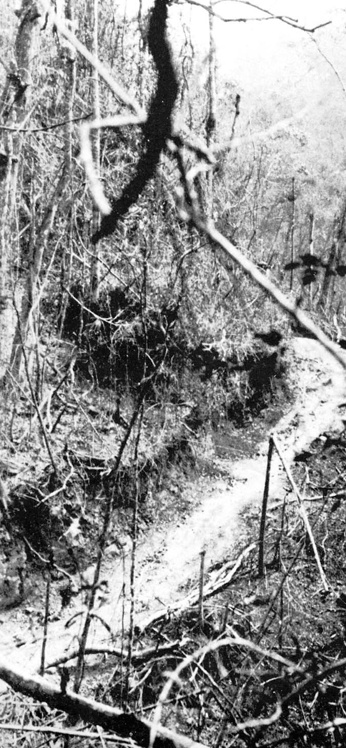
The offensive required a long lead time because of the difficulty of moving supplies south along the tortuous Ho Chi Minh Trail. This section of the supply line consists of a road carved into the side of a hill for the movement of light trucks.
Reviewing events, the Communist leaders recognized that heretofore their battlefield strategy- had relied upon well-planned, periodic small- to medium-sized surgical strikes against selected targets and daily small-scale actions designed to raise the enemy's anxiety level and destroy his self-confidence. However, aggressive American tactics during 1967 seemed to auger poorly for the future. A Viet Cong general explains:
'In the spring of 1967 Westmoreland began his second campaign. It was very fierce. Certain of our people were very discouraged. There was much discussion on the course of the war - should we continue main-force efforts, or should we pull back into a more local strategy. But by the middle of 1967 we concluded that you had not reversed the balance of forces on the battlefield. So we decided to carry out one decisive battle to force LBJ to de-escalate the war.'
While this statement was written with hindsight, it is doubtful if strategists believed that they could force an American de-escalation so readily. It is notable that aggressive American tactics were producing results and prompted Hanoi to take a huge gamble.
Impatient and concerned over the trend of events, General Vo Nguyen Giap, the North Vietnamese Defence Minister, proposed a general offensive. While it is difficult to ascertain the high command's exact expectations - as of 1989 they remain obscured by propaganda and the difficulty of gaining access to North Vietnamese records - Giap apparently believed that such an offensive would trigger a popular uprising in the South. Hanoi labelled the plan 'the general offensive/ general uprising' indicating that they clearly believed that civilians in the South would rally to their cause. Giap further proposed that the offensive take place during the next lunar New Year festival, some six months hence. The slow, tortuous progress with which supplies could move south dictated this long lead time. While the sacrilege of attacking during Tet might offend many Vietnamese, Giap believed the festival would provide the perfect cover. Furthermore, it had an historic precedent: in 1789 Vietnamese patriots had attacked the occupying Chinese in Hanoi during the lunar New Year festival.
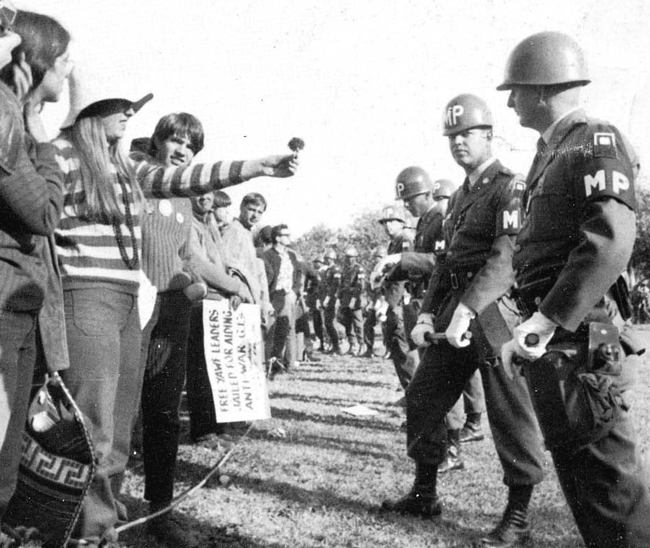
The beginning of the large search and destroy missions in 1967, with their attendant increase in American casualties, coincided with a large increase in racial and civil unrest in the USA. During the first nine months of 1967, public anti-war protest, ranging from minor demonstrations to full-scale riots, occurred in 150 cities. These events drained military resources. The October, 1967 demonstration in Washington, DC, shown here, culminated in the Pentagon Riots. Over 10,000 Marines and Army troops manned positions inside the nation's capital. Three battalions guarded the Pentagon itself. Military planners had to consider seriously the possibility of national insurrection. Such results justified the North Vietnamese emphasis upon relating battlefield events and American public opinion.
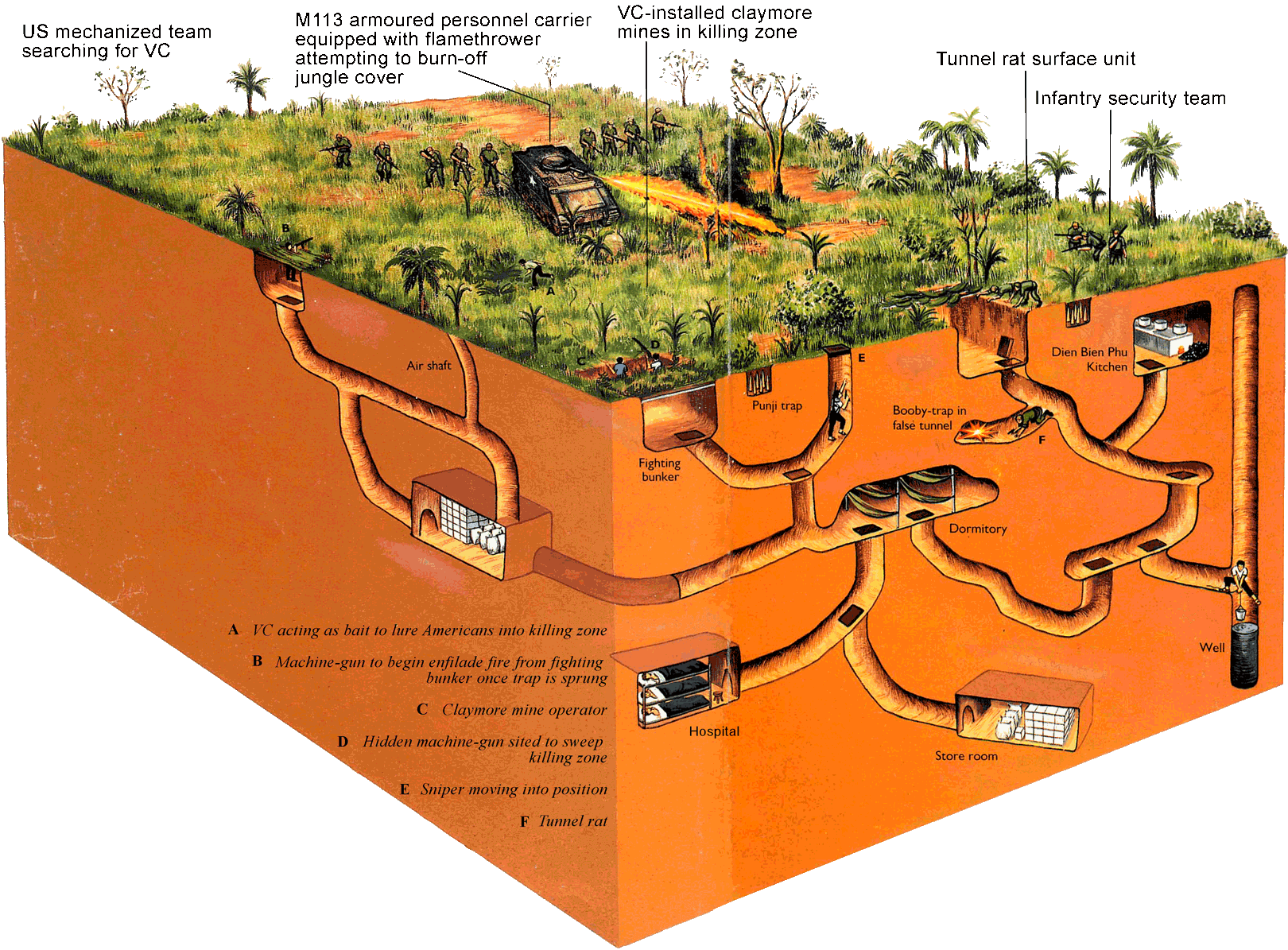
THE TUNNELS OF CU CHI
Cut-away diagram of Viet Cong underground storage and assembly complex.
Twenty miles northwest of Saigon was the Iron Triangle and the adjacent Cu Chi district. Here, since 1945, the Vict Cong and their village sympathizers had laboured to construct an incredible maze of in multi-layered, many chambered tunnels. Its existence was a matter of geology, geography and tactics. The soil itself, laterite clay, was ideal for tunnelling since it did not crumble and formed a brick-hard, impermeable surface. The tunnels served as a storage and assembly area. Via a geographic oddity, a protruding linger of Cambodia pointed toward the Iron Triangle and Saigon. Munitions and infiltrating guerrillas moved from sanctuaries in Cambodia to the secure, concealed assembly areas in the tunnels. Allied strategists well understood this and viewed the Iron Triangle as a dagger pointed at Saigon.
However, they failed to appreciate the tactical importance of the tunnels. They had a higher purpose than mere concealment. Communist doctrine decreed: 'If the tunnels are dug so as to exploit their effectiveness fully, the villages and hamlets will become extremely strong fortresses. The enemy may be several times superior to us in strength and modern weapons, but he will not chase us from the battlefield, because ire will launch surprise attacks from within the underground tunnels.' Until well past Tet this proved to be exactly the way the VC operated from the tunnels.
The Americans aimed several large-scale search and destroy operations at the Iron Triangle, the best known of which, Operation 'Cedfar Falls', employed more than 30,000 troops. Literally on the surface, these operations were complete successes: mechanized forces with heavy infantry escorts dominated the above-ground terrain. American officers failed to realize that the absence of the enemy merely meant that he had disappeared underground. The US Army claimed to have destroyed 525 tunnels during 'Cedar Falls', yet the local Viet Cong tunnel inspector noted that only the first 50 metres, at most, of any tunnel was damaged. Given that one village had a 1,700-metre long tunnel system, such destruction was hardly paralyzing. In sum, the sweeps through the Iron Triangle disrupted the Viet Cong, but that is all. As soon as the Americans left, the VC resumed their normal routines. As 1967 drew to a close an important part of this routine involved stockpiling resources for the coming offensive.
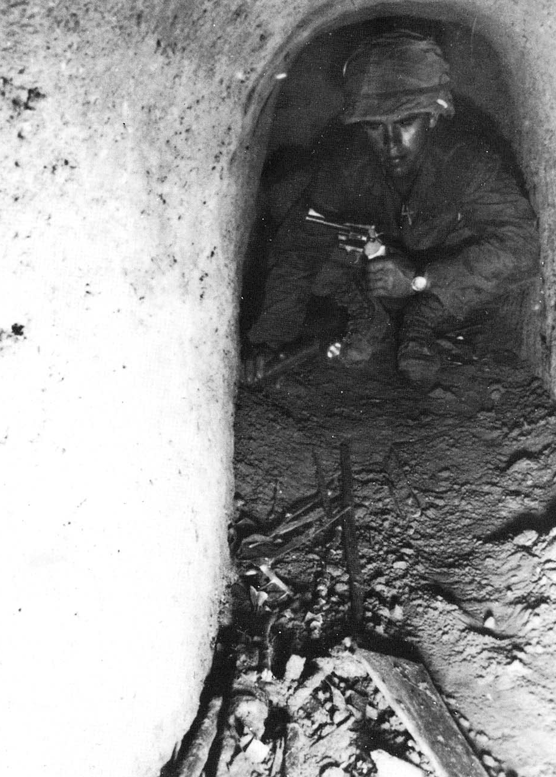
A 'tunnel rat' of the 173rd Airborne Brigade approaches the remains of an enemy camp fire far below the surface in the Iron Triangle.
To encourage the fighters in the South, the Communist Party utilized all its formidable propaganda powers. Typical was the exhortation given by the Binh Dinh Province Committee to its trusted cadres:
'The General Offensive will occur only once every 1,000 years.
It will decide the fate of the country.
It will end the war.
It constitutes the wishes of both the Party and the people.'
At secret bases inside South Vietnam and in adjacent, so-called neutral Laos and Cambodia, morale-building efforts proceeded. The 'Second Congress of Heroes, Emulation Combatants and Valiant Men of the South Vietnam People's Liberation Armed Forces' convened to hear Ho Chi Minh's message calling them the 'flowers of the nation'. They included a one-armed soldier who had learned to fire his rifle with his elbow and killed two Americans, and a mine-laying specialist who had been credited with the implausible total of 400 enemy killed, thus earning the title 'Valiant American Killer'. One 17-year-old 'hero' addressed the meeting: 'If he has hatred, even a child can kill Americans.' Such efforts as these rekindled flagging Vict Cong spirits.
Not all the Communist leaders shared the general euphoria. The deputy political chief for Saigon was in closer touch with reality than his higher command. He knew the urban guerrillas were poorly organized and relatively few in number. When he mentioned his doubts, his superiors dressed him down for being 'overly pessimistic' and told him to leave strategy-making to his betters.
In general terms, the July conference in Hanoi decreed that the Tet General Offensive would carry the fighting into previously untouched South Vietnamese urban centres. Here the people would rally to the National Liberation Front and overthrow Thieu's government. Since 1968 was also an election year in America, the successful offensive would help convince the American public that the war was unwinnable. A strike on Saigon was one of the key aspects of the general offensive.
Just as in the Second World War when the German Army secretly advanced through a series of staging areas to suprise the American defenders in the Ardennes, so the Vict Cong brought munitions over the border from Cambodia to the tunnels of Cu Chi and the Iron Triangle. Men and weapons assembled in the tunnels where they received detailed briefings. Systematically they moved into Saigon suburbs and on the eve of the assault gathered in specially prepared safe houses inside Saigon. Agents, often women and children, moved weapons past the city's checkpoints by a variety of subterfuges including hiding them beneath agricultural produce or concealing them inside coffins as part of bogus funeral processions.
Mai Chi Tho, the political commissar of the region encompassing Saigon, carefully planned the assault from a tunnel base in the Iron Triangle:
'During the Tet Offensive, I was in the Iron Triangle. We were working day and night. It was a time of very secret and intensive activity. Many of our officers had to secretly reconnoitre the enemy targets. They moved around in Saigon on forged identity papers. Our fifth columnists, soldiers and officers working inside enemy military installations, came to report.'
From such reports, the Viet Cong received detailed information on the defences they would confront.
The Tet Offensive bore the unmistakeable imprint of General Giap. Giap pursued a three-phase military strategy: resistance; general offensive; and general uprising. The strategy featured an evolution from hit and run guerrilla warfare to the formation of regular units that would engage in conventional, objective-seizing battle. The problem with this doctrine was that it required battlefield concentration and thus provided an unmistakeable target for American firepower.

Private and 2nd Lieutenant (kneeling) of the US Marine Corps. Illustration by Mike Chappell
Communist planners hoped to utilize captured resources in a variety of imaginative ways. NVA artillerymen were to accompany the assault against an Army of the Republic of Vietnam (ARVN) artillery installation in the central highlands. They would man the captured artillery pieces. Similarly, in Saigon, NVA tank troops would follow the assault against an ARVN armour school to operate the captured vehicles. Near Saigon another artillery team would man weapons captured from an artillery training school. Thus the Communist planners boldly schemed to provide their soldiers with the heavy weapons they had always lacked. Meanwhile, another team carried a recorded speech from Ho Chi Minh designed to promote a popular uprising against the South Vietnamese government. They planned on broadcasting this speech once the assault troops had captured the South Vietnamese national radio station.
The Army of the Republic of Vietnam
Vietnam has a long tradition of resisting outside influence. Opposition to foreigners superseded internecine dispute. Thus, from the beginning it was an unnatural and very uneasy alliance between the South Vietnamese government and the United States. Moreover, what the South Vietnamese government decreed might well be ignored by a people faced with the options of allying with foreigners to fight their own people, staying neutral, or doing whatever it took to survive. Since 1965 American forces had carried the brunt of offensive operations while the South Vietnamese carried out so-called pacification efforts. Thus, on the eve of Tet, they were dispersed in myriad garrisons scattered around the countryside.
Before Tet the South Vietnamese armed forces included 342,951 regulars in the Army, Navy, Air Force, and Marine Corps. Americans performed most technical and command and control functions in these units. Underpinning the ARAN infantry were some 12,000 American advisers. Each division had about 300 Americans who served as liason/advison/logistics specialists. In the field, each battalion had a three- to five- man American advisory team. Since the Americans brought their own radios, they could rapidly tap into the American arsenal of on-call firepower.
In theory, the American assumption of major combat provided a break from the fighting and thus an opportunity for the South Vietnamese to train and improve. In some cases this is what happened. Nha Trang's excellent Dong De (sergeants' school) is a case in point. More often, soldiers sent to training schools naturally took advantage of the respite from combat to loaf. Furthermore, much of the instruction was poor. A veteran infantryman recalls that Ranger school featured instruction based on outdated US Second World War and Korean War doctrine. Some of the instructors were political appointees. The key instructor position was a patronage post, a welcome, comfortable rear-area assignment. Too often instructors taught American doctrine by rote. In contrast were wounded veterans who would not deal with obsolete doctrine; instead 'they taught wisdom'.
Ironically, by the time the combat schools had updated their curriculum to teach counter-insurgency, the enemy had switched to more conventional, mainforce tactics. Ranger School's 'muddy diploma' - so called because most graduates attended during the monsoon season when combat was at an ebb - and much of the other instruction that was supposed to take place while Americans bore the brunt of combat, failed to achieve American expectations. Part of the problem stemmed from poor equipment. Most ARVN units lacked modern radios, essential for calling artillery and air support. Before Tet, only the elite Airborne battalions and Marine Brigade, one infantry regiment, and five Ranger battalions possessed M-16 rifles. The balance of the ten regular infantry divisions and virtually all the various militias made do with assorted outdated weapons. These units knew they were outgunned when confronting AK-47-firing North Vietnamese regulars or mainforce Viet Cong.
Endemic corruption afflicted many units. Thieu's spoils system kept him securely in power by awarding command positions to cronies, but combat leadership suffered. The common soldier knew that all too often his officers enriched themselves on US aid meant to increase their fighting ability. This situation prevailed even among so-called elite units. Periodically, Westmoreland had to threaten to withhold funds from Ranger battalions, supposedly among the army's best, because they were absconding with massive amounts of aid intended for the civilians they were protecting.
When examining the pre-Tet ARVN order of battle, American planners saw a very uneven picture of performance. Some ARVN units had benefited from withdrawal from front-line combat. Others had lost all combat effectiveness. There were some excellent units, most notably the airborne and marine units. An American adviser said of them:
'These guys are part of the strategic reserve. They get moved all over the country to fight and are away from their families 10 or 11 months a year, year after year. They are all volunteers. When people say the South Vietnamese won't tight, they shouldn't include units like the Vietnamese Marines.'
However, in the American estimation, corruption and poor training, leadership, and equipment rendered six of the ten regular divisions combat ineffective.
We have much more interesting information on this site.
Click MENU to check it out!
∎ cartalana.com© 2009-2025 ∎ mailto: cartalana@cartalana.com